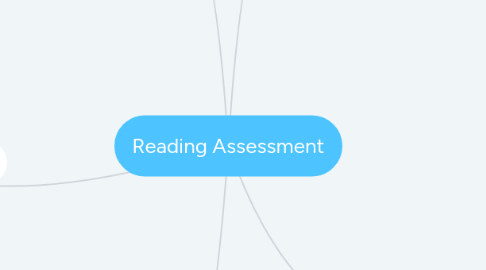
1. Rich Language Environment
1.1. Reading is a part of the physical and learning environment.
1.1.1. Literacy embedded across curriculum areas.
1.1.1.1. Cross-curricular learning experiences. Read-Aloud in math, shared-reading in science.
1.1.2. High quality literature and levelled texts.
1.1.2.1. Texts from a variety of genres and different forms of text.
1.1.3. Library, labels, anchor charts/posters of comprehension skills/reading strategies, word lists, sounds.
2. Balanced Instruction
2.1. "Balance of direct instruction, guided instruction, independent learning, and practice."- Early Reading Strategy
2.1.1. Instruction happens in large and small groups, and independent practice.
2.1.2. Assessment tools include running records, observation, conferences, retelling, literacy circles.
2.2. "Integration of phonics and word study in reading, writing, and oral language instruction."-Early Reading Strategies
2.2.1. Make connections between print and oral language through play, such as role playing restaurants with menus.
2.2.2. Letter-sound knowledge, word lists, and writing samples as assessment tools.
3. Supportive Classroom Environment
3.1. Care
3.1.1. Show an interest in developing student potential. Use assessment to drive instruction that meets the needs of students and motivates students to read.
3.2. Trust
3.2.1. Build relationships with students by conferencing with students about reading and providing students with feedback to further their abilities as readers.
3.2.1.1. Fair assessment and feedback that is communicated to students and parents. Provide with next steps that are reasonable.
4. Evidence-Based Assessment
4.1. Understanding of assessment targets the students should hit. -High Quality Classroom Assessments
4.1.1. What do I want my students to learn? How will I know they are learning?
4.1.1.1. Provide students with clear learning goals and objectives. Choose appropriate assessments to "check-in" with students understanding of learning goals. Adjust teaching to help students reach learning target.
4.1.2. Quality and quantity of assessments that have a clear purpose and learning target will promote student success in reading.
4.2. Assessment should be ongoing, frequent and organized. -The Early Reading Strategy
4.2.1. Diagnostic
4.2.1.1. Identify a students current reading level and comprehension skills so that learning targets cans be identified.
4.2.1.1.1. Running Records, DRA, Retells, Observation, Conferences
4.2.2. Formative Assessment
4.2.2.1. Ongoing assessment that tracks student progress towards learning targets.
4.2.2.1.1. Observations, portfolios.
4.2.3. Summative
4.2.3.1. Make judgements about student's understanding of learning goals.
4.2.3.1.1. Running records, DRA, Retells
5. Authentic Literacy Experiences
5.1. Discussion and conversations about reading. For example, discussing tricky word strategies in guided groups.
5.1.1. Record anecdotal notes during guided reading and conferences to assess student's applying learning goals.
5.2. Link learning experiences to students prior knowledge. For example, asking students what they think the story is about based on the cover.
5.2.1. Do a picture walk with students before reading the text.
5.2.2. Have students write reflections or connections in a reading log to assess student comprehension of texts.
5.3. Project Based Learning
5.3.1. Students choose a topic that interests them. Students are motivated to learn and apply learning targets in an authentic learning experience. Teachers can assess student learning through observation, conferences, and student reflection of learning.

